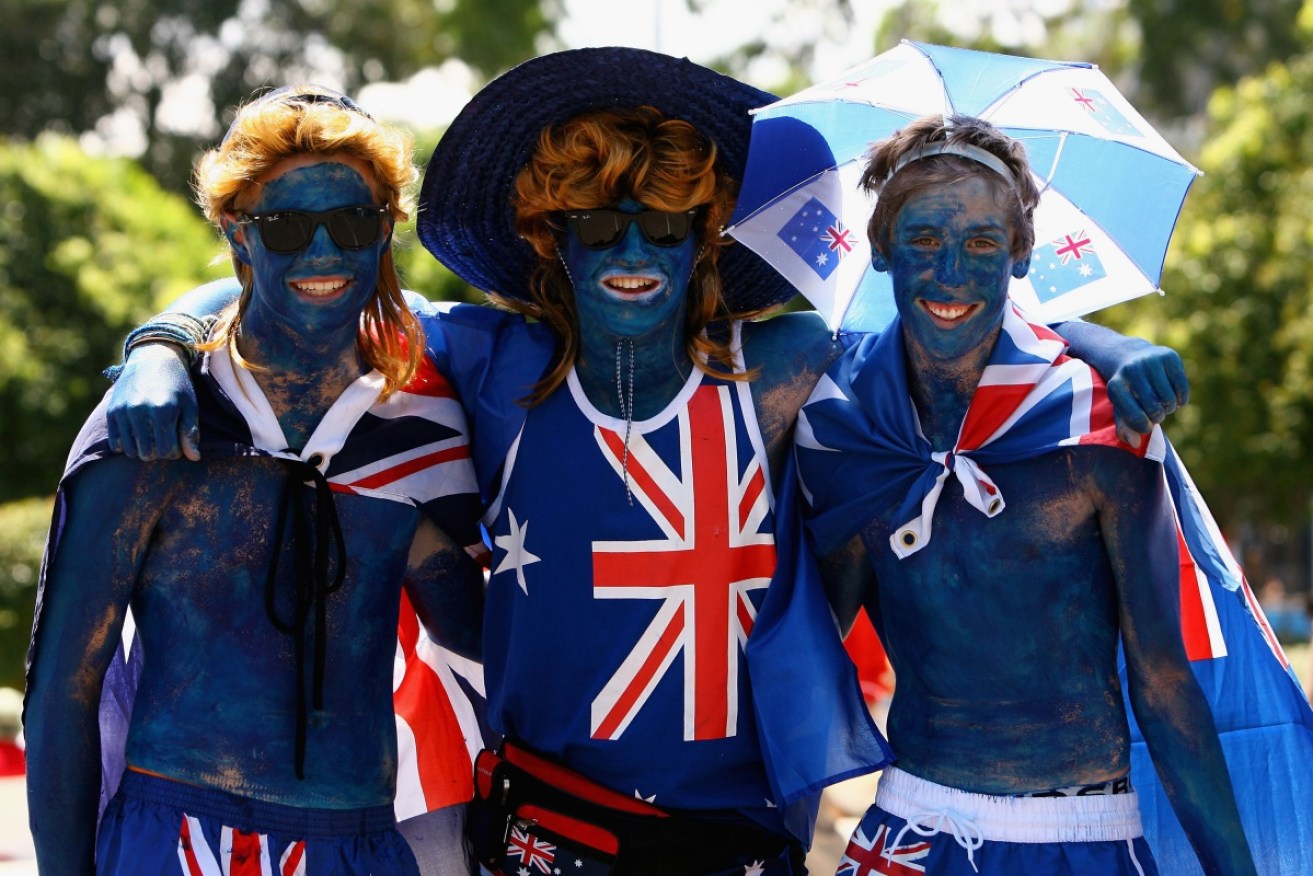Census 2016 data paints the ‘average’ Australian by numbers, and it’s not who you might think


True blue: the latest census opens a statistical window on a complex and multi-faceted nation. Photo: Getty
Despite reports that we’re turning into a multiracial ethnic jigsaw of a nation, the 2016 census describes the “average” Australian as someone who doesn’t break any stereotypes.
She’s 38, a mother of two children, living in a free-standing house of three bedrooms, with two cars in the driveway.
She still calls herself a Christian, although not with much conviction.
And she’s bringing in $622 a week – way less than half the total average family income of $1734.
Before you curse the “average husband” for earning almost twice as much as his wife, social researcher David Chalke advises a look at earlier ABS data that shows how mum is working part-time in retail (like so many of our kids).
“She’s also slightly overweight,” adds Mr Chalke, whose AustraliaSCAN survey of national attitudes has been taking the national pulse for 25 years.
Mr Chalke says the ABS is yet to release a nuanced analysis of the average family unit.
“The data shows 44.7 per cent of families are couples with children. What isn’t shown yet is that 10 per cent of the families have children 18 years and over still hanging around. They’ll eventually hop out into the system.”
Overall, says Mr Chalke, census 2016 doesn’t show much that we didn’t already know – and fails to make clear to what extent the great Australian dream is becoming out of reach. It’s hinted at, though, in the percentage of homes owned outright (31 per cent, down from 41.1 per cent in 1991), and the percentage of those under a mortgage (34.5 per cent up from 27.5 per cent) and rental homes (30.9 per cent up from 26.9).
As the ABS says on its website: “While these proportions remained relatively similar to recent censuses, 25 years ago it was much more common to own a house outright … while in 2016 houses being rented or owned with a mortgage made up 65 per cent of households, 25 years ago they made up 54 per cent of households.”

There’s little joy for first home buyers in the latest census numbers.
The numbers show a shift, but they don’t suggest the emerging hopelessness that many young people feel about breaking into the housing market, unless they move into a jobless hamlet in the boondocks.
It’s by taking the longer view, says Mr Chalke, that we can see the significant changes occurring for Australia.
So what do the current numbers tell us about the future average Australian? Mr Chalke quotes Homer Simpson: “You can use facts to prove anything that’s even remotely true.”
Based on what we might call breakaway trends, the average Australian in the 22nd century will have abandoned her cloying children, her economically-abusive husband and her unhelpful Jesus to become an ageing Chinese-Aboriginal lesbian of the Hindu persuasion, who lives alone but describes herself to be part of a couple.
Where does this come from? For a start, the 2016 census counted 46,800 same-sex couples across Australia. This was an increase of 39 per cent since the 2011 census, which counted 33,700 same-sex couples.
Says Mr Chalke: “People have become more comfortable in identifying with minority groups who have been previously marginalised. It’s more acceptable to come out. In fact, the rise of identity politics in recent years almost demands it.”
Consider, too, the number of Aboriginal and Torres Strait Islander peoples having increased by 18 per cent since the 2011 census, when they made up 2.5 per cent of Australians.

The number of those Australians identifying as Aborigines has soared.
While to some extent this increase also relies on identity politics, as more Australians identify with indigenous people for emotional reasons (as an extension of the age-old Aussie tradition of rooting for the underdog) or because they feel more comfortable to acknowledge a genetic connection via a great-grandmother, Mr Chalke says the main driver is a higher birth rate of a sort common to socially deprived peoples.
“It’s actually an indicator that things aren’t going well … birth rates typically drop off when people gain access to education and other resources to better their lives.”
Finally, Hinduism was the fastest-growing religion in Australia in the past 25 years, up from 0.3 per cent of the total population in 1991 to 1.9 per cent in 2016. That’s a growth of more than 500 per cent!
“The numbers never lie,” says Mr Chalke. “They let analysts do the lying for them.”








